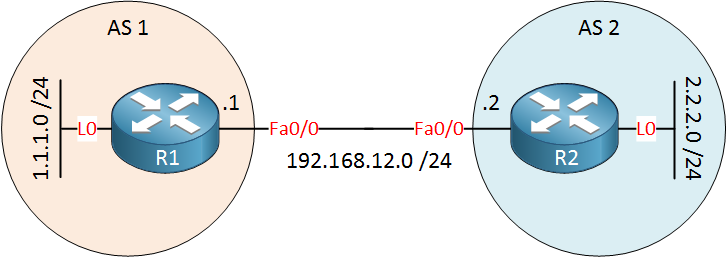BGP - eBGP peerings
An eBGP peering in the context of deploying BGP is a peering that takes place between two BGP routers that belong to different Autonomous Systems (ASes). An eBGP peering is characterized by the fact that the ASNs of the two peers are different. If they were the same, it would be considered an iBGP peering.
The following diagram illustrates an eBGP peering between R1 and R2 that are in different ASes:

eBGP peers are typically physically directly connected. This is reinforced by the fact that by default, an eBGP peering can have a TTL of 1, allowing for a single hop to reach the peer. eBGP also checks to see if the configured eBGP peer is directly connected before establishing the peering.
The eBGP multihop and disable connected check features can be used to override this default behavior, but they should be employed only under special and/or highly controlled circumstances.
Links
https://networklessons.com/bgp/how-to-configure-ebgp-external-bgp https://networklessons.com/bgp/ebgp-multihop